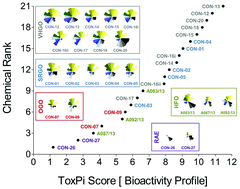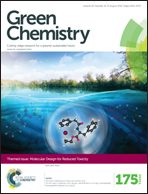A chemical–biological similarity-based grouping of complex substances as a prototype approach for evaluating chemical alternatives†
Abstract
Comparative assessment of potential human health impacts is a critical step in evaluating both chemical alternatives and existing products on the market. Most alternatives assessments are conducted on a chemical-by-chemical basis and it is seldom acknowledged that humans are exposed to complex products, not individual substances. Indeed, substances of Unknown or Variable composition, Complex reaction products, and Biological materials (UVCBs) are ubiquitous in commerce yet they present a major challenge for registration and health assessments. Here, we present a comprehensive experimental and computational approach to categorize UVCBs according to global similarities in their bioactivity using a suite of in vitro models. We used petroleum substances, an important group of UVCBs which are grouped for regulatory approval and read-across primarily on physico-chemical properties and the manufacturing process, and only partially based on toxicity data, as a case study. We exposed induced pluripotent stem cell-derived cardiomyocytes and hepatocytes to DMSO-soluble extracts of 21 petroleum substances from five product groups. Concentration-response data from high-content imaging in cardiomyocytes and hepatocytes, as well as targeted high-throughput transcriptomic analysis of the hepatocytes, revealed distinct groups of petroleum substances. Data integration showed that bioactivity profiling affords clustering of petroleum substances in a manner similar to the manufacturing process-based categories. Moreover, we observed a high degree of correlation between bioactivity profiles and physico-chemical properties, as well as improved groupings when chemical and biological data were combined. Altogether, we demonstrate how novel in vitro screening approaches can be effectively utilized in combination with physico-chemical characteristics to group complex substances and enable read-across. This approach allows for rapid and scientifically-informed evaluation of health impacts of both existing substances and their chemical alternatives.

- This article is part of the themed collection: Molecular Design for Reduced Toxicity

 Please wait while we load your content...
Please wait while we load your content...